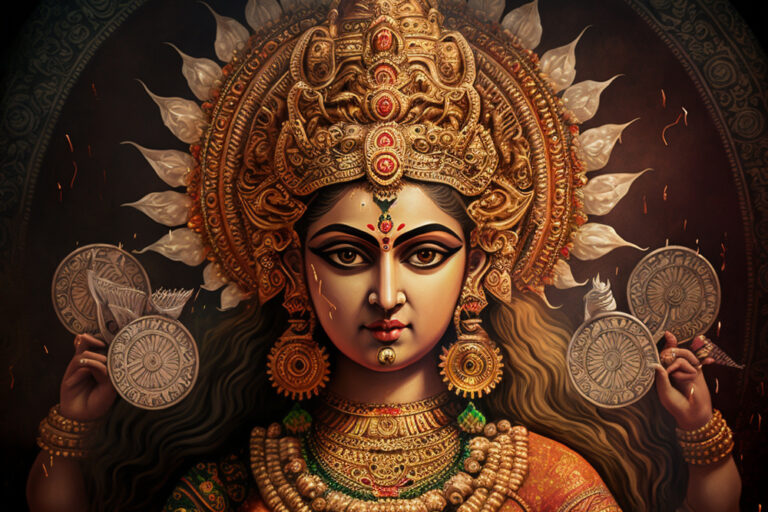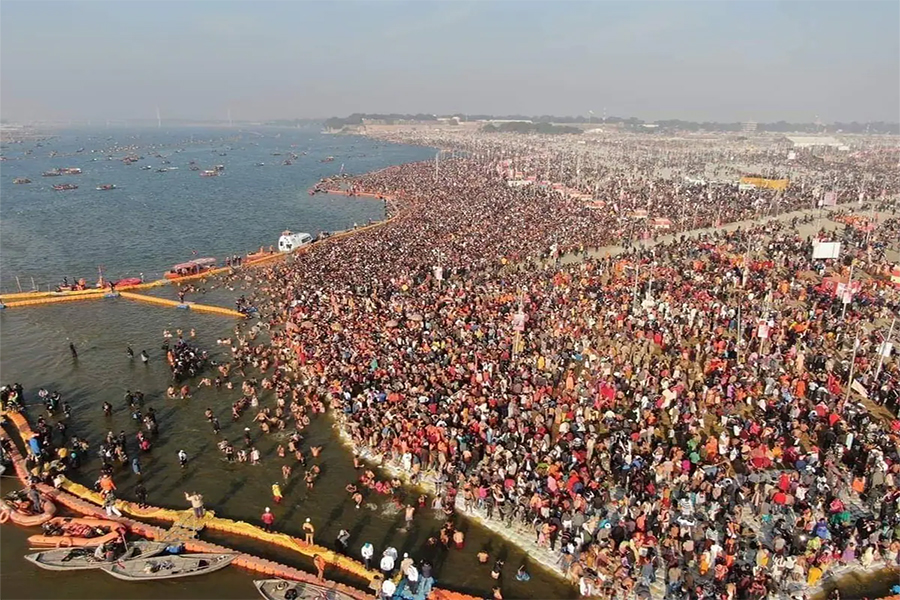Navaratri and Its Significance: A Celebration of Divine Power
Navaratri, one of the most revered Hindu festivals, is a nine-day celebration that honors the victory of good over evil. The word "Navaratri" is derived from the Sanskrit words "Nava" (meaning nine) and "Ratri" (meaning nights). This auspicious festival is dedicated to the worship of Goddess Durga and her nine divine forms, each representing different aspects of feminine energy or Shakti. Celebrated with great fervor across India, Navaratri holds deep cultural, spiritual, and religious significance.
When is Navaratri Celebrated?
Navaratri typically falls in the month of Ashwin (September-October) according to the Hindu lunar calendar. It is celebrated in two major forms:
- Sharad Navaratri (the most popular, marking the beginning of autumn).
- Chaitra Navaratri (celebrated in spring).
However, Sharad Navaratri, also known simply as Navaratri, is the most widely observed and holds immense importance in the Hindu calendar.
The Nine Forms of Goddess Durga
Each day of Navaratri is dedicated to one of the nine forms of Goddess Durga, who represents the divine feminine energy. Here’s a breakdown of the nine days and their significance:
- Day 1: Shailaputri - Worshipped as the daughter of the Himalayas, Shailaputri symbolizes strength and purity.
- Day 2: Brahmacharini - Representing penance and devotion, Brahmacharini is the goddess of asceticism.
- Day 3: Chandraghanta - She represents bravery and protects her devotees from harm.
- Day 4: Kushmanda - Known as the creator of the universe, she blesses with health and prosperity.
- Day 5: Skandamata - She is the mother of Skanda (Lord Kartikeya) and symbolizes motherly love and compassion.
- Day 6: Katyayani - A warrior goddess, Katyayani is worshipped for courage and valor.
- Day 7: Kalaratri - This fierce form of Durga destroys ignorance and removes darkness.
- Day 8: Mahagauri - She represents purity, serenity, and forgiveness.
- Day 9: Siddhidatri - Known as the giver of supernatural powers (siddhis), she blesses her devotees with spiritual fulfillment.
The Spiritual Significance of Navaratri
Navaratri is not just a cultural celebration but also a period of intense spiritual awakening. Devotees observe fasting, prayer, and meditation to cleanse their body, mind, and soul. It is believed that Goddess Durga descends to Earth during this period to bless her devotees and guide them on the path of righteousness.
Rituals and Celebrations
The celebration of Navaratri varies by region, but the central theme remains the same: honoring the divine feminine power.
-
Fasting and Devotion: Devotees observe fasts for nine days, consuming only fruits, milk, and simple meals made from ingredients allowed during fasting. This is a way to purify the body and mind.
-
Ghatasthapana: The festival begins with Ghatasthapana, a ritual to invoke the presence of Goddess Durga by placing a kalash (pot) filled with water and grains, symbolizing prosperity and life.
-
Garba and Dandiya: In Gujarat, the evenings are filled with energetic Garba and Dandiya dances, where people dress in vibrant traditional attire and dance to devotional songs.
-
Durga Puja: In West Bengal, Navaratri coincides with Durga Puja, where elaborate idols of Goddess Durga are worshipped in beautifully decorated pandals. The festival culminates with the immersion of the idol in water, symbolizing her return to Mount Kailash.
-
Kanya Puja: On the eighth or ninth day (Ashtami or Navami), many people perform Kanya Puja, where nine young girls, representing the nine forms of Durga, are worshipped with food, gifts, and blessings.
The Victory of Good Over Evil
Navaratri also marks the victory of Goddess Durga over the demon Mahishasura, symbolizing the triumph of good over evil. The final day, known as Vijayadashami or Dussehra, celebrates Lord Rama's victory over the demon king Ravana, adding another layer of meaning to the festival. Both stories serve as powerful reminders of the importance of righteousness, courage, and devotion.
The Health and Wellness Benefits of Fasting During Navaratri
In addition to the spiritual significance, Navaratri fasting is believed to have several health benefits. By consuming sattvic (pure and wholesome) food, the body undergoes detoxification. Fasting also improves digestion, boosts metabolism, and enhances mental clarity.
Regional Variations of Navaratri Celebrations
-
West Bengal: Known as Durga Puja, the festival is celebrated with grandeur, featuring artistic Durga idols, cultural performances, and delicious sweets.
-
Gujarat: Famous for the vibrant Garba and Dandiya Raas dance, people gather in large groups to perform synchronized dances, celebrating the divine feminine.
-
Tamil Nadu and Karnataka: In the southern states, families display a Golu, a collection of clay dolls and figurines representing gods, goddesses, and scenes from mythology.
-
Mysore: The Mysore Palace is illuminated with thousands of lights, and a grand procession of elephants, music, and dancers marks the Mysore Dussehra.
Conclusion: The Timeless Significance of Navaratri
Navaratri is more than just a festival; it is a celebration of life, energy, and the eternal struggle between good and evil. It encourages self-discipline, devotion, and spiritual growth. As we honor the power of the divine feminine during these nine sacred nights, we are reminded of our own inner strength and the importance of overcoming negativity in our lives.
Whether you're fasting, dancing, or simply reflecting on the lessons of Navaratri, this festival is a powerful reminder of the resilience of the human spirit.





0 comments
Write a Reply or Comment